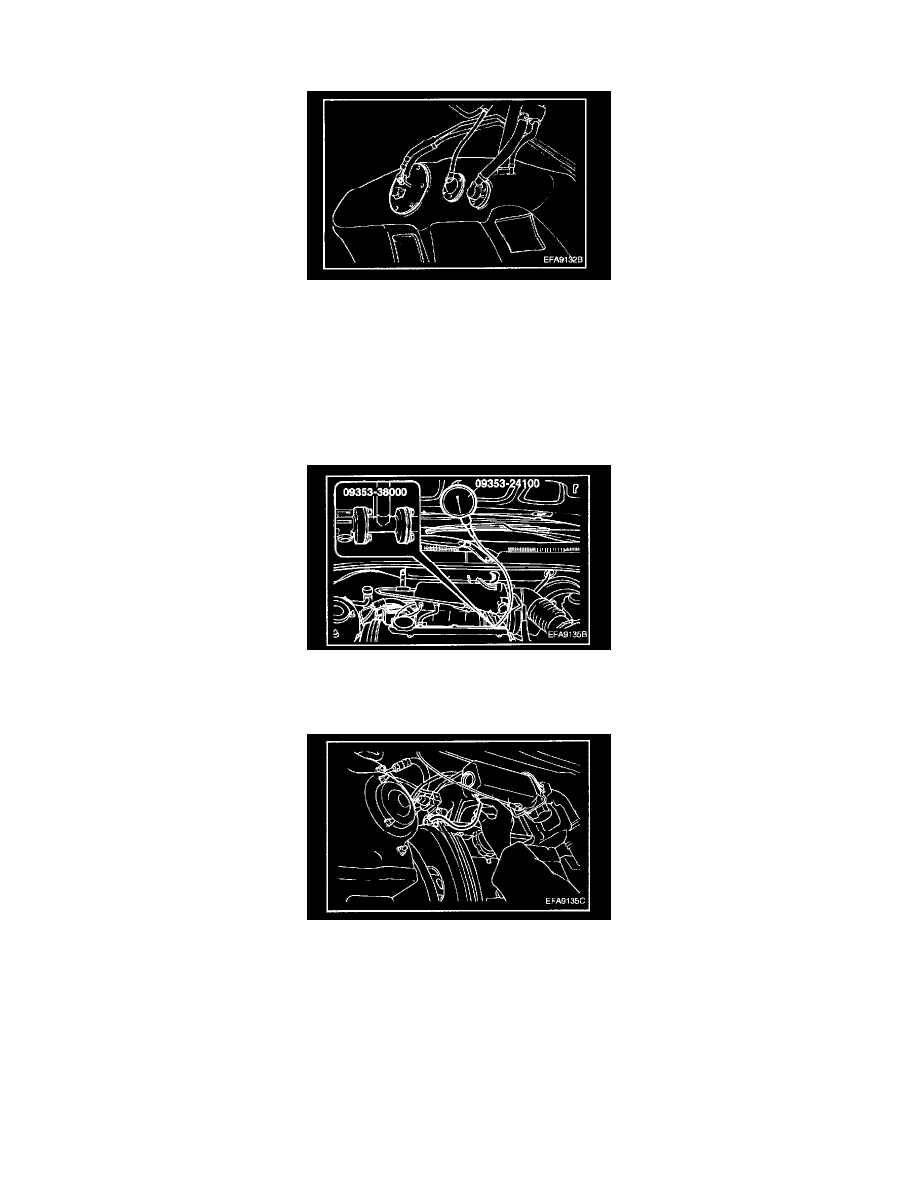Optima L4-2.4L (2001)

Fuel Pressure: Testing and Inspection
FUEL PRESSURE TEST
1. Reduce the internal pressure of the fuel pipes and hoses by the following procedures.
-
Open the trunk door and disconnect the fuel pump harness connector in the trunk room.
-
Start the engine and after it stalls, turn the ignition switch to the OFF position.
-
Disconnect the battery negative (-) terminal.
-
Connect the fuel pump harness connector.
2. Remove the bolt connecting the fuel line to the fuel delivery pipe.
WARNING: Cover the hose connection with a shop towel to prevent splashing of fuel caused by fuel residual pressure in the fuel line.
3. Using the fuel pressure gauge adapter, install the fuel-pressure gauge to the fuel pressure gauge adaptor. Tighten the bolt to the specified torque.
Fuel pressure gauge to fuel delivery pipe 25 - 35 Nm (250 - 350 kg.cm, 18 - 26 lb.ft)
4. Connect the battery's negative (-) terminal.
5. Apply battery voltage to the terminal for the pump drive and activate the fuel pump: then, with fuel pressure applied, check that there is no fuel
leakage from the pressure gauge or connection part.
6. Start and run the engine at curb idle speed.
7. Disconnect the vacuum hose from the pressure regulator, and plug the hose end. Measure the fuel pressure at idle.
Standard value 320 - 340 kPa (3.26 - 3.47 kg/sq.cm, 46 - 49 psi)
